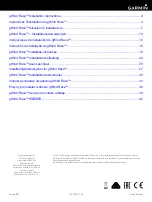
Measurement support
9.3.1
Perform a D1 and D2 density calibration using ProLink II
Prerequisites
• During density calibration, the sensor must be completely filled with the calibration fluid, and
flow through the sensor must be at the lowest rate allowed by your application. This is usually
accomplished by closing the shutoff valve downstream from the sensor, then filling the sensor
with the appropriate fluid.
• D1 and D2 density calibration require a D1 (low-density) fluid and a D2 (high-density) fluid. You
may use air and water.
• The calibrations must be performed without interruption, in the order shown. Make sure that you
are prepared to complete the process without interruption.
• Before performing the calibration, record your current calibration parameters. You can do this by
saving the current configuration to a file on the PC. If the calibration fails, restore the known values.
Restriction
For T-Series sensors, the D1 calibration must be performed on air and the D2 calibration must be
performed on water.
Tip
For T-Series sensors only, you have the option to perform a D3 and D4 calibration to improve the
accuracy of the density measurement if the fluid density is outside of the 0.8 g/cm
3
to 1.2 g/cm
3
density
range. If you choose to perform the D3 and D4 calibration, do not perform the D1 and D2 calibration.
Procedure
To perform a D1 and D2 calibration, see Figure 9-1 .
Configuration and Use Manual
169
















































